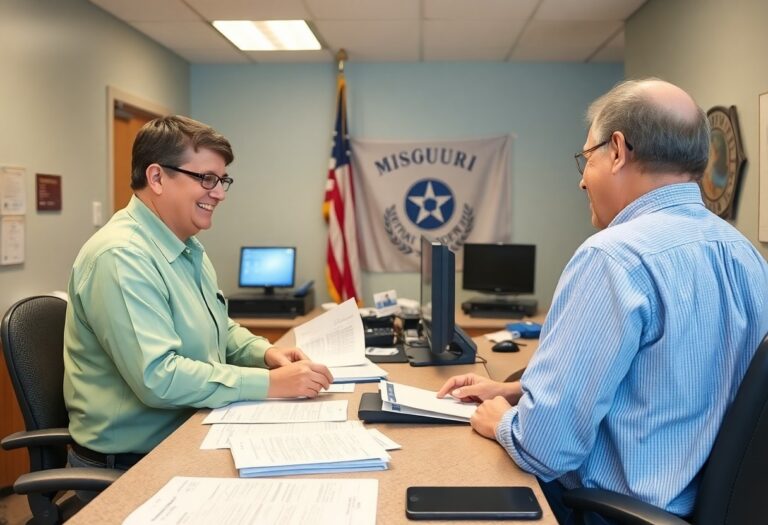There’s a wealth of information available when it comes to accessing crash reports in Wicomico County, Maryland. This guide will help you navigate the process, ensuring you understand where to find and how to request these important documents. Whether you’ve been involved in an accident or need information for legal purposes, you’ll discover the important steps and resources to obtain your crash report efficiently. Armed with the right knowledge, you can take control of the situation and make informed decisions moving forward.
Unlocking Crash Reports: The Legal Framework
The Maryland Public Information Act Explained
The Maryland Public Information Act (PIA) provides you with the right to access a variety of public records, including crash reports. The law encourages transparency within government agencies, ensuring that you can request copies of documents that are not deemed confidential. Typically, law enforcement agencies are required to release these reports to the public, unless specific exceptions exist, such as ongoing investigations or sensitive information that could compromise privacy or safety.
Understanding Your Rights as a Citizen
Your rights as a citizen to access crash reports are protected under the PIA, empowering you to stay informed about road safety and incident documentation in Wicomico County. Accessing these reports can be your first step in understanding the circumstances surrounding an accident, enabling you to seek justice or file a claim. The PIA mandates that agencies respond to your requests in a timely manner, generally within 30 days, ensuring that you have the necessary information at your disposal when needed.
In Wicomico County, if you encounter any resistance when requesting a crash report, knowing your rights can be your best asset. The law stipulates that agencies cannot unreasonably delay or deny access to public records. If you believe your request has been unjustly denied, you have the right to appeal the decision, which can further help hold the agencies accountable and ensure the information you seek is made available. Familiarizing yourself with both your rights and the PIA’s provisions supports a transparent interaction with local authorities responsible for public safety documentation.
Navigating the Wicomico County Sheriff’s Office
Dealing with the Wicomico County Sheriff’s Office for accessing your crash report requires you to follow specific steps. The office is where you will submit your request and get guidance on what to expect in terms of processing time and any associated fees. Understanding the proper channels will smooth the process and ensure you receive your report efficiently.
Getting the Right Contact Information
To initiate your request, start by gathering the correct contact details for the Wicomico County Sheriff’s Office. You can reach them through their official website or by using the phone number listed there. Have a notepad ready to jot down any necessary pieces of information that you may need during your interaction.
Step-by-Step: Requesting Your Crash Report
Requesting your crash report is straightforward if you follow these simple steps:
| Step | Description |
| 1 | Contact the Sheriff’s Office via phone or website. |
| 2 | Provide your accident details, including date and location. |
| 3 | Complete any required forms for your request. |
| 4 | Pay any applicable fees, if necessary. |
| 5 | Receive confirmation and await your report delivery. |
Following these steps helps streamline the process of receiving your crash report. Make sure to provide complete and accurate information, including the incident date, to avoid delays. You might also consider checking if your report is available online for quicker access, as some reports are stored digitally for convenience.
| Helpful Tips | Details |
| Check Online | Some reports may be accessible through online databases. |
| Follow Up | If you haven’t received your report in a timely manner, don’t hesitate to follow up with the office. |
| Prepare for Fees | Be aware that some reports may incur costs, so have your payment method ready. |
What to Expect: The Crash Report Content Breakdown
Understanding crash reports is imperative for anyone involved in a vehicle accident or those wanting clarity on the matter. These documents are detailed and structured, providing a comprehensive view of the events leading to a crash. You can expect to find vital information such as accident descriptions, involved parties, and damage assessments. Additionally, these reports often contain diagrams and sketches illustrating the accident’s dynamics, which can be invaluable for legal or insurance purposes.
Essential Information Included in Reports
Every crash report typically includes key components like the date, time, and location of the accident, as well as details about the vehicles involved and the individuals present. You’ll find data such as driver’s license numbers, insurance details, and descriptions of injuries sustained. Each section is meticulously documented to paint a complete picture of the incident, helping you or your attorney evaluate the situation accurately.
Common Terminology Explained for Laypersons
Many terms in crash reports may seem technical or confusing, but decoding them makes navigating the documentation easier. Words like “factors,” “accident dynamics,” and “point of impact” come up frequently. Each term holds significant meanings that impact your understanding of the report’s findings and implications.
For instance, the term “factors” refers to the various elements contributing to the crash, such as weather conditions, driver behavior, or mechanical failures. “Accident dynamics” describes how the vehicles interacted during the incident, which can reveal who was at fault. Understanding these terms helps you sift through the jargon, ensuring you’re fully informed about the circumstances surrounding the accident. When faced with a crash report, familiarizing yourself with these definitions allows you to engage in discussions with insurance agents or attorneys more effectively.
The Role of Insurance in Accessing Crash Reports
Insurance companies often rely on crash reports to assess liability, determine payouts, and streamline claims processing. Your insurance provider utilizes this documentation to understand the details of an accident, including involved parties, damages, and circumstances, ensuring that they can act quickly and effectively on your claim. Understanding how your report is used can help you navigate the complexities of post-accident proceedings.
How Insurance Companies Use Crash Reports
Upon receiving a crash report, your insurance company analyzes the information to evaluate responsibility for the accident. This includes assessing police findings, witness statements, and other relevant evidence. The assessment plays a key role in deciding whether your claim will be approved and how much compensation you may receive for damages, which can significantly impact your financial recovery.
What to Consider Before Sharing Your Report
When deciding to share your crash report, consider how it may influence your claim and legal standing. Providing full access to your report can expedite claim processing, but it might also expose you to scrutiny from other parties involved in the accident. Weigh the pros and cons carefully to protect your interests while ensuring that you provide sufficient information to your insurer.
Before sharing your crash report, consider the implications of disclosing sensitive information, particularly if there are disputes regarding fault or liability. Understand that other parties, including opposing insurers, may also gain access to this document, raising concerns about potential misuse. Evaluate whether sharing the report aligns with your legal strategy and insurance requirements to navigate these complexities effectively.
Overcoming Common Hurdles in Crash Report Access
Facing obstacles while trying to obtain your crash report can be frustrating. Typical challenges include delays in processing requests, miscommunication between departments, and complexities in understanding the documentation needed. By familiarizing yourself with these common hurdles, you can better navigate the process and ensure you receive the necessary information you need.
Delays and Miscommunication: What to Do
Experiencing delays in receiving your crash report often stems from administrative backlog or unmet procedural requirements. If communication seems lacking, proactively reach out to the relevant office to clarify your request. Be prepared to provide specific details such as the date, location, and parties involved in the crash to expedite the process.
Seeking Help: Local Advocacy and Resources
If you encounter persistent issues accessing your crash report, various local advocacy groups and resources can help. Organizations such as the Maryland Motor Vehicle Administration (MVA) assist individuals navigating the state’s systems. Additionally, local legal aid services can provide guidance on your rights and recommend actions you can take to resolve access problems effectively.
Local advocacy groups often host community workshops to inform residents about their rights regarding crash reports and offer one-on-one support. Engaging with these resources not only provides you with access to valuable information but also connects you to others who may share similar experiences. Consider looking into local law firms specializing in personal injury, as they frequently handle crash report matters and may offer free consultations to help you understand your options and the best way to secure your report.
Conclusion
With these considerations, you are now equipped to navigate your crash report access in Wicomico County, Maryland effectively. Understanding the procedures and resources available will empower you to obtain the information you need promptly. Whether communicating with law enforcement or utilizing online tools, your proactive approach will help ensure that you can manage your affairs efficiently after an accident. Trust in these guidelines to make your experience smoother and more manageable.













